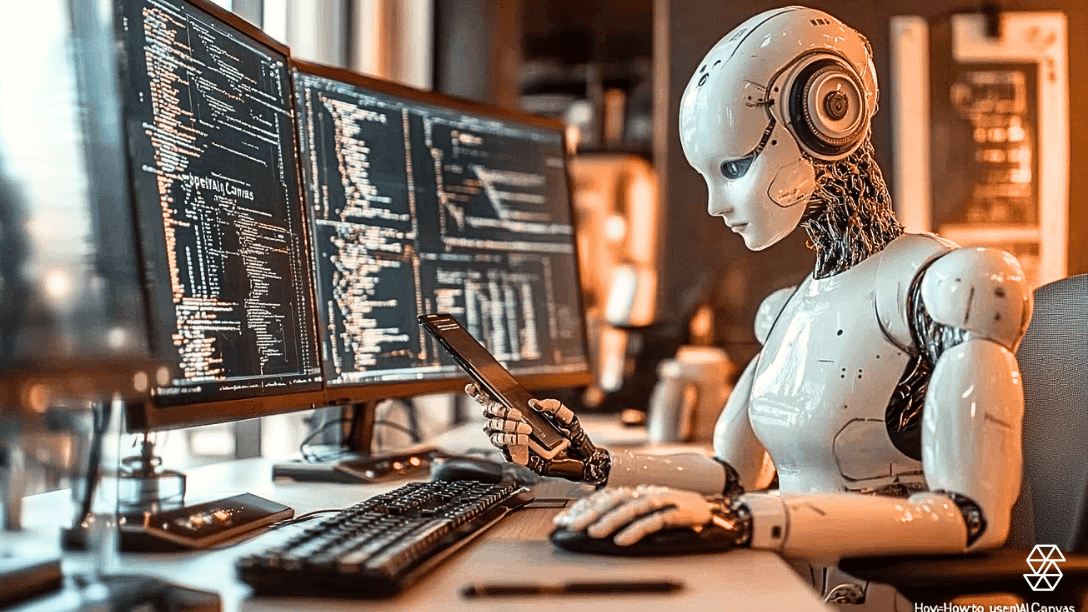10 Statistics on the Future of AI and Dating
In the ever-evolving world of romance and relationships, the integration of artificial intelligence (AI) into dating platforms is not just a fleeting trend, but a significant shift that’s reshaping the very fabric of how we connect and find love. As we stand on the cusp of a new era in digital dating, a deep dive into the statistics reveals fascinating insights into the future of AI and dating.
From the way we seek long-term partnership3s to the criteria we use to select potential matches, AI is playing an increasingly pivotal role. This article explores ten compelling statistics that highlight the growing influence of AI in the dating world, offering a glimpse into what the future of love might look like.
- 1. 47% Would Use AI Dating App for Long-Term Partnerships
- 2. Half of Adults Under 30 Have Used Dating Sites/Apps
- 3. Dating App Revenue to Reach US $3.41 Billion by 2027
- 4. “AI Girlfriend” Searches Increased by 525% in One Year
- 5. 54% Prefer AI Assistance in Finding Matches
- 6. 45% Want AI Recommendations for Physical Attraction
- 7. 47% Interested in Advanced AI-Based Dating Apps for Long-Term Relationships
- 8. 1 in 5 Young People Open to AI/Virtual Partners
- 9. Men Twice as Likely as Women to Consider AI Partners
- 10. Half of Young Adults Using Dating Apps
- The Transformative Role of AI in the Future of Dating
1. 47% Would Use AI Dating App for Long-Term Partnerships
In a recent survey, a striking 47% of participants expressed their willingness to use an AI-powered dating app to find a potential long-term partner. This statistic is a testament to the growing trust and interest in AI’s capabilities to navigate the complex world of dating. Unlike traditional dating platforms, AI dating apps promise a more nuanced and personalized approach to matchmaking. By leveraging advanced algorithms and machine learning, these apps aim to understand individual preferences and personality traits, potentially leading to more meaningful and compatible relationships.
This significant percentage of people open to AI-assisted dating reflects a broader shift in attitudes towards technology’s role in our personal lives. As AI continues to evolve and become more sophisticated, we can expect this number to grow, with more individuals seeking AI’s assistance in finding not just dates, but life partners. This trend also highlights the potential for AI dating apps to revolutionize the matchmaking process, making it more efficient, tailored, and successful in fostering long-term relationships.
2. Half of Adults Under 30 Have Used Dating Sites/Apps
A revealing statistic from 2023 Pew Research findings shows that about half of all adults under 30 have used a dating site or app. This significant figure underscores the widespread adoption and normalization of online dating among younger generations. In an era where digital interaction is second nature, dating apps have become a primary avenue for forming romantic connections. The ease of use, the vast pool of potential matches, and the ability to filter preferences have made online dating particularly appealing to the tech-savvy, younger demographic.
This widespread use of dating apps by younger adults also highlights the changing perceptions of online dating, from a once-stigmatized practice to a commonplace and accepted method of finding a partner. As this trend continues, dating apps are likely to further evolve, incorporating more sophisticated AI tools to cater to the preferences and behaviors of this growing user base.

3. Dating App Revenue to Reach US $3.41 Billion by 2027
The financial trajectory of the dating app industry is on an impressive upward curve. The global revenue generated from dating apps stood at US $2.86 billion in 2022 and is projected to reach a staggering US $3.41 billion by 2027. This growth is not just a reflection of the increasing number of users but also an indication of how integral AI has become in enhancing the dating app experience.
AI integration is a key factor driving this revenue growth. AI-powered features such as personalized match suggestions, behavioral analytics, and enhanced security measures are making dating apps more effective and appealing to users. The financial impact of AI in the dating industry is significant, as these advanced features often come under premium offerings, thereby increasing revenue streams for app developers. This trend also points to a future where AI becomes an indispensable component of the online dating experience, further driving innovation and profitability in the sector.
4. “AI Girlfriend” Searches Increased by 525% in One Year
The surge in interest in AI girlfriends, with search queries soaring by 525% in a single year, marks a fascinating development in the realm of AI and dating. This dramatic increase reflects a growing curiosity and acceptance of AI as a potential partner. The concept of AI girlfriends, once limited to science fiction, is gaining traction in reality, showcasing the evolving relationship between humans and AI.
This surge in interest can be attributed to advancements in AI technology that have made interactions with AI more realistic and emotionally nuanced. It also signals a broader societal shift where people are exploring unconventional forms of companionship. The fascination with AI girlfriends indicates a significant market for AI-powered companionship solutions, opening new avenues for innovation in the AI and dating industries. As AI continues to advance, we can expect to see more sophisticated AI partners, blurring the lines between human and machine interactions in the dating realm.

5. 54% Prefer AI Assistance in Finding Matches
A significant 54% of survey respondents have expressed a preference for AI assistance in finding matches on dating apps. This majority reflects the growing trust in AI’s ability to understand and cater to personalized dating criteria effectively. AI-powered tools in dating apps analyze user behavior, preferences, and interactions to suggest compatible partners. This level of customization is appealing as it promises a more tailored and potentially successful dating experience, moving beyond the limitations of traditional matchmaking algorithms.
The use of AI in this aspect of dating apps demonstrates a shift towards more intelligent, user-centric services. It suggests that users are seeking not just any match, but the right match, which AI technologies are increasingly capable of providing. This preference for AI assistance is a clear indicator of the value users place on personalized and insightful matchmaking, a trend likely to grow as AI technology continues to evolve.
6. 45% Want AI Recommendations for Physical Attraction
Approximately 45% of users are interested in AI recommendations for matches they will find physically attractive, based on a visual survey. This statistic highlights a significant portion of the dating app user base that values physical attraction as a key component in their search for a partner. By submitting visual preferences, users can leverage AI’s capabilities to analyze and understand their attraction patterns, leading to more visually appealing match suggestions.
This desire for AI to play a role in identifying physical attraction underscores the evolving nature of dating apps. It also shows a growing sophistication in how AI can be used to understand the nuanced preferences of users, going beyond simple profile matching to a more comprehensive and nuanced understanding of individual attraction.

7. 47% Interested in Advanced AI-Based Dating Apps for Long-Term Relationships
Further underscoring the confidence in AI’s capabilities within the dating scene, 47% of respondents have shown interest in joining advanced, AI-based dating apps to find potential long-term partners. This statistic reveals an important aspect of dating app usage: the pursuit of lasting relationships rather than fleeting encounters. Users are increasingly looking towards AI to aid them in finding partners with whom they can establish deeper, more enduring relationships.
The interest in AI-based apps for long-term relationships points to a significant opportunity for developers and companies in the dating app industry. It suggests a market leaning towards more serious matchmaking, where AI’s ability to analyze deeper compatibility factors is highly valued.
8. 1 in 5 Young People Open to AI/Virtual Partners
The openness of the younger generation (13-39-year-olds) toward AI or virtual boyfriends/girlfriends is notable, with nearly one in five expressing interest in such relationships. This statistic reflects the shifting perceptions of relationships among younger people, who are more open to exploring non-traditional forms of companionship. It indicates a growing curiosity and acceptance of AI as more than just a tool for matchmaking, but as a potential partner in its own right.
This openness also points to broader implications for the future of relationships and social interaction. As technology continues to advance, and as AI becomes more sophisticated and integrated into daily life, the concept of AI or virtual partners may become more mainstream. It suggests a future where human-AI relationships could be as common as traditional human-human relationships, especially among younger, tech-savvy generations.

9. Men Twice as Likely as Women to Consider AI Partners
In exploring the dynamics of AI and dating, an intriguing gender disparity emerges: men are more than twice as likely as women to consider an AI partner. This significant difference points to varying attitudes and openness towards AI relationships between the genders. Men, it appears, are more receptive to the idea of integrating AI into their romantic lives, whether for companionship or as a tool for finding a human partner. This could be attributed to a variety of factors, including differing approaches to technology, varying social expectations, or simply a higher level of curiosity about AI’s potential in the realm of dating.
Understanding this disparity is crucial for developers and marketers in the AI dating industry, as it highlights the need for tailored approaches when addressing different demographics. It also opens up discussions about the social and psychological factors that influence how different genders view AI in the context of personal and romantic relationships.
10. Half of Young Adults Using Dating Apps
The consistent trend of dating app usage among young adults reinforces the entrenched role of online dating in modern relationships. Approximately half of all adults under 30 have engaged with dating sites or apps, a statistic that has remained stable, highlighting the enduring popularity and relevance of these platforms. This trend underscores the significant shift in how younger generations approach dating, with digital interaction becoming a primary method for forming romantic connections.
The steady use of dating apps by young adults also indicates that these platforms must continue to innovate to meet the evolving needs and expectations of this demographic. As AI technology becomes more integrated into these platforms, it is likely to further revolutionize the dating experience, offering more personalized, efficient, and engaging ways to connect.
The Transformative Role of AI in the Future of Dating
These statistics collectively paint a vivid picture of the transformative role AI is poised to play in the dating industry. From the growing acceptance of AI-assisted matchmaking to the openness towards AI and virtual relationships, it’s clear that AI is not just a passing trend but a driving force reshaping the landscape of love and relationships.
As we look towards the future, the implications of these trends are profound. AI’s integration into dating apps is set to deepen, offering more nuanced and personalized experiences that align with individual preferences and desires. The gender disparities in AI acceptance and the consistent popularity of dating apps among young adults highlight areas for targeted innovation and marketing within the industry.
Ultimately, these trends suggest a future where AI becomes a fundamental part of how we form and maintain romantic relationships. Whether in finding the perfect match, enhancing communication, or even exploring new forms of companionship, AI’s role in the world of dating is set to expand, potentially leading to more meaningful connections and a deeper understanding of what it means to find love in the digital age.
Sources: Statistica, Pew Research, Tidio, Google Trends






